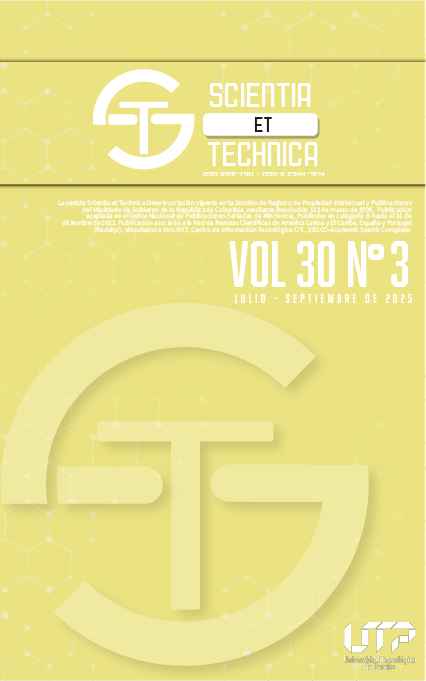A proposal for a fuzzy climate classification index for Colombia
DOI:
https://doi.org/10.22517/23447214.25894Palabras clave:
climate change, climate classification, climate, fuzzy logic, temperatureResumen
En este estudio se desarrolló un índice de clasificación climática basado en lógica difusa para Colombia, integrando variables hidroclimáticas, de calidad del aire y topográficas mediante una metodología de tres fases. En la Fase 1 (2010-2022), se adquirieron y procesaron datos multifuente de precipitación (600-8000 mm/año), temperatura (14-32°C), humedad (28-95%), PM₂.₅ (6-35 µg/m³) y NO₂ (10-60 ppb) utilizando el portal DHIME del IDEAM y productos NASA Giovanni, con interpolación controlada por calidad. La Fase 2 implementó un sistema de inferencia difusa tipo Mamdani en FisPro, creando 127 reglas "Si-Entonces" mediante análisis de correlación no lineal (Spearman >0.65) y conocimiento experto, utilizando operadores MIN-MAX y ponderaciones adaptativas (coeficientes de 0.3 para zonas rurales y 0.5 urbanas). La Fase 3 de implementación geoespacial alcanzó un 92.3% de precisión en validación cruzada (MAE=1.2, RMSE=1.8), generando mapas de vulnerabilidad (escala 0-10) mediante procesamiento en QGIS. Los resultados revelaron extrema variabilidad climática: gradientes de precipitación (600 mm/año en Riohacha hasta 8000 mm en Quibdó), islas de calor urbanas (Neiva 30°C vs. Bogotá 16°C) y focos de contaminación (Barranquilla 30 µg/m³ de PM₂.₅ vs. Leticia 6 µg/m³). El índice difuso superó métodos tradicionales (Köppen, Thornthwaite) al capturar interacciones no lineales, mostrando reducciones del 15% en rendimientos agrícolas en zonas con alto NO₂ e identificando umbrales de vulnerabilidad para brotes de roya en café (>80% humedad) y estrés térmico urbano (85% HR = 41°C de sensación térmica). La estructura adaptativa del modelo abordó efectivamente la heterogeneidad climática colombiana superando limitaciones de clasificaciones rígidas, proporcionando una herramienta robusta para evaluación de riesgos climáticos bajo escenarios de cambio antropogénico, aunque futuros trabajos deberían incorporar datos de contaminación de mayor resolución para reducir el 15% de incertidumbre en zonas industriales.
Descargas
Citas
S. Rodriguez-Flores, C. Muñoz-Robles, J. A. Quevedo Tiznado, and P. Julio-Miranda, “Assessment of watershed health, integrating environmental, social, and climate change criteria into a fuzzy logic framework,” Science of the Total Environment, vol. 960, Jan. 2025, doi: 10.1016/j.scitotenv.2024.178316.
F. Dong, S. Wang, and G. Yang, “Comprehensive index of extreme climate risk in China and urban sustainable development,” Chinese Journal of Population Resources and Environment, vol. 23, no. 1, pp. 62–74, Mar. 2025, doi: 10.Bar16/j.cjpre.2025.01.006.
A. Rojas-Ospina, A. Zuñiga-Collazos, and M. Castillo-Palacio, “Factors influencing environmental sustainability performance: A study applied to coffee crops in Colombia,” Journal of Open Innovation: Technology, Market, and Complexity, vol. 10, no. 3, Sep. 2024, doi: 10.1016/j.joitmc.2024.100361.
C. Vargas et al., “Climate-resilient and regenerative futures for Latin America and the Caribbean,” Futures, vol. 142, Sep. 2022, doi: 10.1016/j.futures.2022.103014.
P. Santibáñez, R. Zamora, J. Franchi, D. Montaner-Fernández, and F. Santibáñez, “Bioclimatic stress index: A tool to evaluate climate change impact on Mediterranean arid ecosystems,” J Arid Environ, vol. 229, Aug. 2025, doi: 10.1016/j.jaridenv.2025.105376.
G. A. Rodríguez, “Retos para enfrentar el cambio climático en Colombia,” Retos para enfrentar el cambio climático en Colombia, 2020, ISBN 9789587845280, p. 1, 2020, Accessed: Oct. 28, 2024. [Online]. Available: https://dialnet.unirioja.es/servlet/articulo?codigo=8887572
N. Clerici, F. Cote-Navarro, F. J. Escobedo, K. Rubiano, and J. C. Villegas, “Spatio-temporal and cumulative effects of land use-land cover and climate change on two ecosystem services in the Colombian Andes,” Science of the Total Environment, vol. 685, pp. 1181–1192, Oct. 2019, doi: 10.1016/j.scitotenv.2019.06.275.
J. Ruíz, O. Vargas, and N. Rodríguez, “Restoration priorities: Integrating successional states and landscape resilience in tropical dry forest compensation projects in Colombia,” Applied Geography, vol. 157, Aug. 2023, doi: 10.1016/j.apgeog.2023.103021.
R. J. Cole, L. K. Werden, F. C. Arroyo, K. M. Quirós, G. Q. Cedeño, and T. W. Crowther, “Forest restoration in practice across Latin America,” Biol Conserv, vol. 294, Jun. 2024, doi: 10.1016/j.biocon.2024.110608.
J. Fajardo-Gonzalez, C. A. K. Lovell, J. Lovell, and H. Edmonds, “Measuring climate risks: A new multidimensional index for global vulnerability and resilience,” Environ Dev, vol. 56, Sep. 2025, doi: 10.1016/j.envdev.2025.101227.
R. Singh et al., “Assessment of climate resilience index: Insight from Murrah buffalo-based livestock production system of Western India,” Agric Syst, vol. 228, Aug. 2025, doi: 10.1016/j.agsy.2025.104390.
S. Turbay, B. Nates, F. Jaramillo, J. J. Vélez, and O. L. Ocampo, “Adaptation to climate variability among the coffee farmers of the watersheds of the rivers Porce and Chinchiná, Colombia,” Investigaciones Geograficas, vol. 85, pp. 95–112, 2014, doi: 10.14350/rig.42298.
P. Rychtecká, P. Samec, and J. Rosíková, “Floodplain forest soil series along the naturally wandering gravel-bed river in temperate submontane altitudes,” Catena (Amst), vol. 222, Mar. 2023, doi: 10.1016/j.catena.2022.106830.
D. Gómez, E. Aristizábal, E. F. García, D. Marín, S. Valencia, and M. Vásquez, “Landslides forecasting using satellite rainfall estimations and machine learning in the Colombian Andean region,” J South Am Earth Sci, vol. 125, May 2023, doi: 10.1016/j.jsames.2023.104293.
F. Ceballos-Sierra and S. Dall’Erba, “The effect of climate variability on Colombian coffee productivity: A dynamic panel model approach,” Agric Syst, vol. 190, May 2021, doi: 10.1016/j.agsy.2021.103126.
J. Romero-Cuéllar, A. Buitrago-Vargas, T. Quintero-Ruiz, and F. Francés, “Simulación hidrológica de los impactos potenciales del cambio climático en la cuenca hidrográfica del río Aipe, en Huila, Colombia,” Ribagua, vol. 5, no. 1, pp. 63–78, Jan. 2018, doi: 10.1080/23863781.2018.1454574.
G. Aruta, F. Ascione, N. Bianco, G. M. Mauro, and F. Villano, “Artificial neural networks to forecast building heating/cooling demand and climate resilience based on envelope parameters and new climatic stress indices,” Journal of Building Engineering, vol. 108, Aug. 2025, doi: 10.1016/j.jobe.2025.112849.
H. A. Arregocés, D. Gómez, and M. L. Castellanos, “Annual and monthly precipitation trends: An indicator of climate change in the Caribbean region of Colombia,” Case Studies in Chemical and Environmental Engineering, vol. 10, Dec. 2024, doi: 10.1016/j.cscee.2024.100834.
M. C. Linares-Rodríguez, N. Gambetta, and M. A. García-Benau, “Climate action information disclosure in Colombian companies: A regional and sectorial analysis,” Urban Clim, vol. 51, Sep. 2023, doi: 10.1016/j.uclim.2023.101626.
C. Villa-Loaiza, I. Taype-Huaman, J. Benavides-Franco, G. Buenaventura-Vera, and J. Carabalí-Mosquera, “Does climate impact the relationship between the energy price and the stock market? The Colombian case,” Appl Energy, vol. 336, Apr. 2023, doi: 10.1016/j.apenergy.2023.120800.
A. Celletti, U. Locatelli, T. Ruggeri, and E. Strickland, “Springer INdAM Series 6 Mathematical Models and Methods for Planet Earth.” [Online]. Available: http://www.springer.com/series/10283
C. Bockstaller, S. Beauchet, V. Manneville, B. Amiaud, and R. Botreau, “A tool to design fuzzy decision trees for sustainability assessment,” Environmental Modelling and Software, vol. 97, pp. 130–144, Nov. 2017, doi: 10.1016/j.envsoft.2017.07.011.
S. Guillaume and B. Charnomordic, “Learning interpretable fuzzy inference systems with FisPro,” Inf Sci (N Y), vol. 181, no. 20, pp. 4409–4427, Oct. 2011, doi: 10.1016/j.ins.2011.03.025.
S. Guillaume and B. Charnomordic, “Fuzzy inference systems: An integrated modeling environment for collaboration between expert knowledge and data using FisPro,” Expert Syst Appl, vol. 39, no. 10, pp. 8744–8755, Aug. 2012, doi: 10.1016/j.eswa.2012.01.206.
M. Pota, M. Esposito, and G. De Pietro, “Likelihood-fuzzy analysis: From data, through statistics, to interpretable fuzzy classifiers,” International Journal of Approximate Reasoning, vol. 93, pp. 88–102, Feb. 2018, doi: 10.1016/j.ijar.2017.10.022.
H. Sarkheil, E. Rostamian, S. Rahbari, and R. Lak, “Developing a novel ecological fuzzy forest health index (FFHI) for Standardizing forest-smart mining using remote sensing techniques,” Environmental and Sustainability Indicators, vol. 26, Jun. 2025, doi: 10.1016/j.indic.2025.100700.
R. Calone et al., “A fuzzy logic evaluation of synergies and trade-offs between agricultural production and climate change mitigation,” J Clean Prod, vol. 442, Feb. 2024, doi: 10.1016/j.jclepro.2024.140878.
G. Narvaez, L. F. Giraldo, M. Bressan, and A. Pantoja, “The impact of climate change on photovoltaic power potential in Southwestern Colombia,” Heliyon, vol. 8, no. 10, Oct. 2022, doi: 10.1016/j.heliyon.2022.e11122.
Y. Xia, J. Wang, Z. Zhang, D. Wei, Z. Cao, and Z. Li, “A wind speed point-interval fuzzy forecasting system based on data decomposition and multiobjective optimizer,” Appl Soft Comput, vol. 165, Nov. 2024, doi: 10.1016/j.asoc.2024.112084.
E. Brazález, H. Macià, G. Díaz, M. T. Baeza_Romero, E. Valero, and V. Valero, “FUME: An air quality decision support system for cities based on CEP technology and fuzzy logic,” Appl Soft Comput, vol. 129, Nov. 2022, doi: 10.1016/j.asoc.2022.109536.
A. Gersnoviez, J. C. Gámez-Granados, M. Cabrera-Fernández, I. Santiago, E. Cañete-Carmona, and M. Brox, “Neuro-fuzzy systems for daily solar irradiance classification and PV efficiency forecasting,” Alexandria Engineering Journal, vol. 79, pp. 21–33, Sep. 2023, doi: 10.1016/j.aej.2023.07.072.
E. Vergara-Vásquez, L. M. Hernández Beleño, T. T. Castrillo-Borja, T. R. Bolaño-Ortíz, Y. Camargo-Caicedo, and A. M. Vélez-Pereira, “Airborne particulate matter integral assessment in Magdalena department, Colombia: Patterns, health impact, and policy management,” Heliyon, vol. 10, no. 16, Aug. 2024, doi: 10.1016/j.heliyon.2024.e36284.
Descargas
-
Vistas(Views): 207
- PDF Descargas(Downloads): 78
Publicado
Cómo citar
Número
Sección
Licencia
Derechos de autor 2025 Scientia et Technica

Esta obra está bajo una licencia internacional Creative Commons Atribución-NoComercial-CompartirIgual 4.0.
Derechos de autor y licencias
La revista es de acceso abierto gratuito y sus artículos se publican bajo la licencia Creative Commons Atribución/Reconocimiento-No Comercial-Compartir bajo los mismos términos 4.0 Internacional — CC BY-NC-SA 4.0.
Los autores de un artículo aceptado para publicación cederán la totalidad de los derechos patrimoniales a la Universidad Tecnológica de Pereira de manera gratuita, teniendo en cuenta lo siguiente: En caso de que el trabajo presentado sea aprobado para su publicación, los autores deben autorizar de manera ilimitada en el tiempo, a la revista para que pueda reproducirlo, editarlo, distribuirlo, exhibirlo y comunicarlo en cualquier lugar, ya sea por medios impresos, electrónicos, bases de datos, repositorios, discos ópticos, Internet o cualquier otro medio requerido.
Los cedentes mediante contrato CESIÓN DE DERECHOS PATRIMONIALES declaran que todo el material que forma parte del artículo está totalmente libre de derechos de autor de terceros y, por lo tanto, se hacen responsables de cualquier litigio o reclamación relacionada o reclamación relacionada con derechos de propiedad intelectual, exonerando de toda responsabilidad a la Universidad Tecnológica de Pereira (entidad editora) y a su revista Scientia et Technica. De igual forma, los autores aceptan que el trabajo que se presenta sea distribuido en acceso abierto gratuito, resguardando los derechos de autor bajo la licencia Creative Commons Atribución/Reconocimiento-No Comercial- Compartir bajo los mismos términos 4.0 Internacional — CC BY-NC-SA 4.0.
https://creativecommons.org/licenses/by-nc-sa/4.0/
A los autores, la revista Scientia et Technica tiene la obligación de respetarle los derechos morales (artículo 30 de la Ley 23 de 1982 del Gobierno Colombiano) que se les debe reconocen a estos la paternidad de la obra, el derecho a la integridad y el derecho de divulgación. Estos no se pueden ceder ni renunciar.



